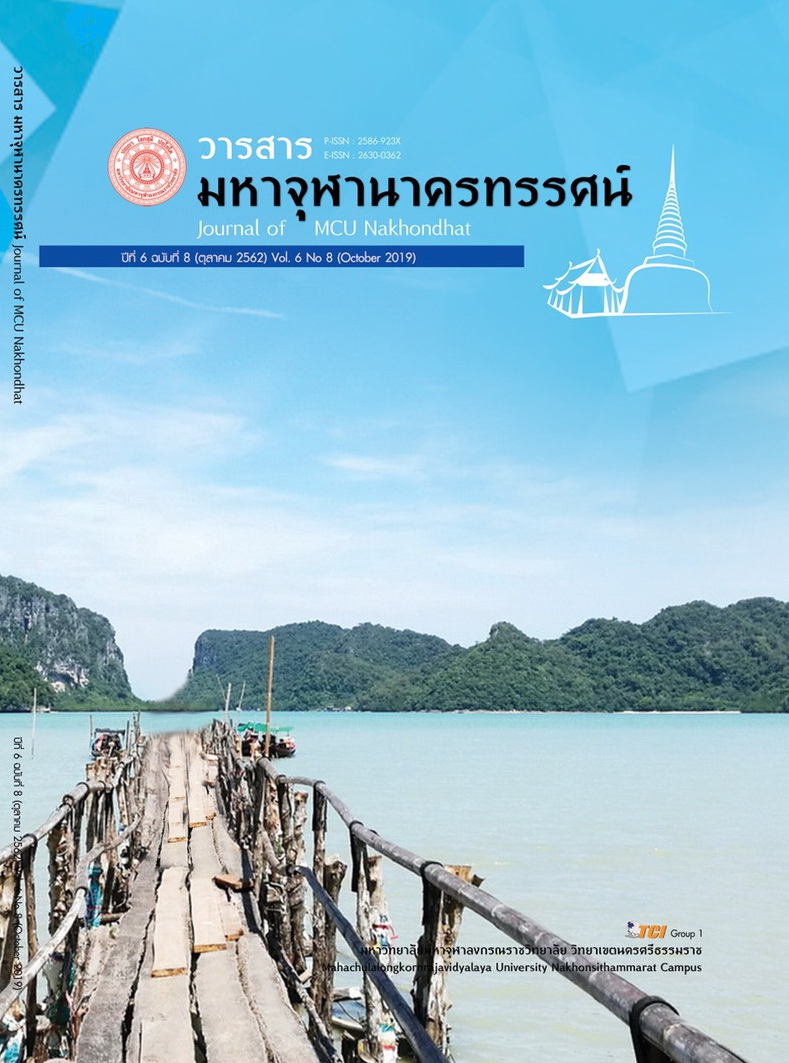A DEVELOPMENT OF THE THERAVADA BUDDHIST GOOD GOVERNANCE INDICATORS FOR MONASTERY ADMINISTRATION
Main Article Content
Abstract
The study of "Development of Theravada Buddhist Good Governance indicators for monastery administration" aims 1) to study the current monastery administration 2) to study the elements of Theravada Buddhist Good Governance 3) to develop Theravada Buddhist Good Governance indicators for monastery administration. Education is a qualitative research. With in-depth interviews with sample groups in the administrative area of the Nakhonratchasima Sangha Province, Group 4
The study indicated that:
- In the present, monastery administration there are 3 principles for management that are Buddha’s rules or Dhamma and Vinaya, the laws and traditions of Sangha society With the abbot being the legal measure administrator. And there is a monastery committee to assist in the administration. The mission of the temple is different from the past that has only administrative and religious affairs. At present, the monastery has to undertake all 6 missions, including Sangha administration, Buddhist mission, Buddhist education, Monastic construction. Welfare education and public welfare.
- The results of the study of Buddhist elements of Theravada Buddhist Good Governance found that the Sangha administration consisted of 18 elements. The Buddhist mission consisted of 12 elements. Buddhist education with 13 elements, Monastic construction, there are 13 elements, welfare education, 12 elements, and public welfare, with 13 elements.
- The results of the development of Theravada Buddhist Good Governance found that the Sangha administration consisted of 30 indicators. The Buddhist mission consisted of 30 indicators, Buddhist education with 30 indicators, Monastic construction, there are 30 indicators, welfare education, 30 indicators, and public welfare, with 30 indicators
The indicators of good governance in Theravada Buddhism for monastery administration are in accordance with international Good governance principles. Each side is tied together into a net. Because the indicators on each side will be examined to other side, such as in terms of supervision with indicators for administration by the committee. This indicator also checks transparency. Because administration is transparent, therefore must be managed according to the form of the board, etc. In addition, it helps to promote the principles of the discipline [Dhamma-Vinaya]. From the past, the discipline was viewed as an individual or personal practice. But when integrated with Good governance Dhamma-Vinaya discipline is a process or management system and is a sustainable development.
Article Details
References
ประภาส ชลศรานนท์. (2550). แมงกะพรุนถนัดซ้าย. กรุงเทพมหานคร: เวิร์คพ้อยท์.
พระพรหมบัณฑิต (ประยูร ธมฺมจิตฺโต). (2558). การปฏิรูปกิจการพระพุทธศาสนา. พระนครศรีอยุธยา: มหาวิทยาลัยมหาจุฬาลงกรณราชวิทยาลัย.
พระไพศาล วิสาโล. (2546). พุทธศาสนาไทยในอนาคต แนวโน้มและทางออกจากวิกฤต. กรุงเทพมหานคร: มูลนิธิสดศรี-สฤษดิ์วงศ์.
สำนักงานเลขาธิการคณะรัฐมนตรี. (2560). รัฐธรรมนูญแห่งราชอาณาจักรไทย พ.ศ. 2560 ราชกิจจานุเบกษา เล่ม 134 ตอนที่ 40. กรุงเทพมหานคร: สำนักงานเลขาธิการคณะรัฐมนตรี.

